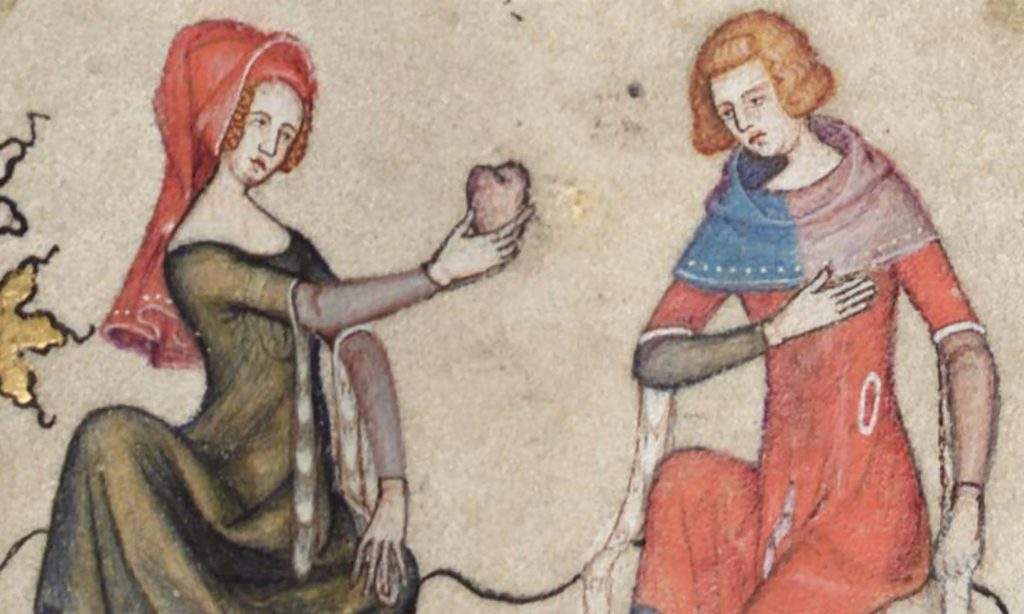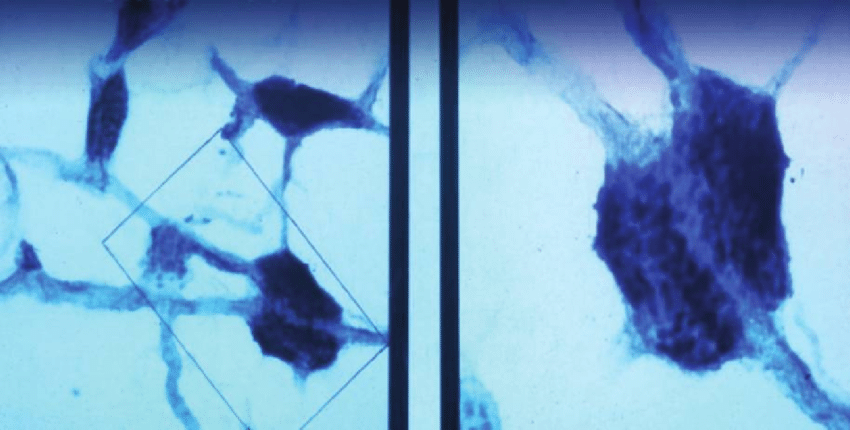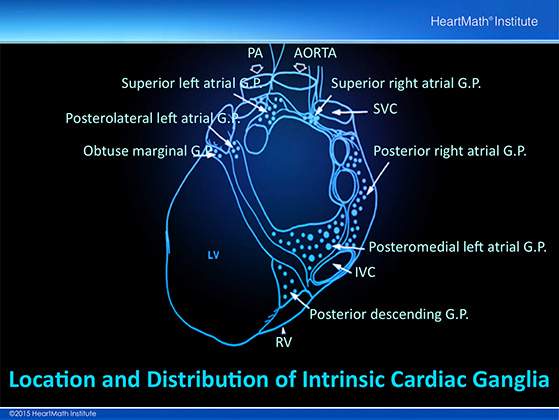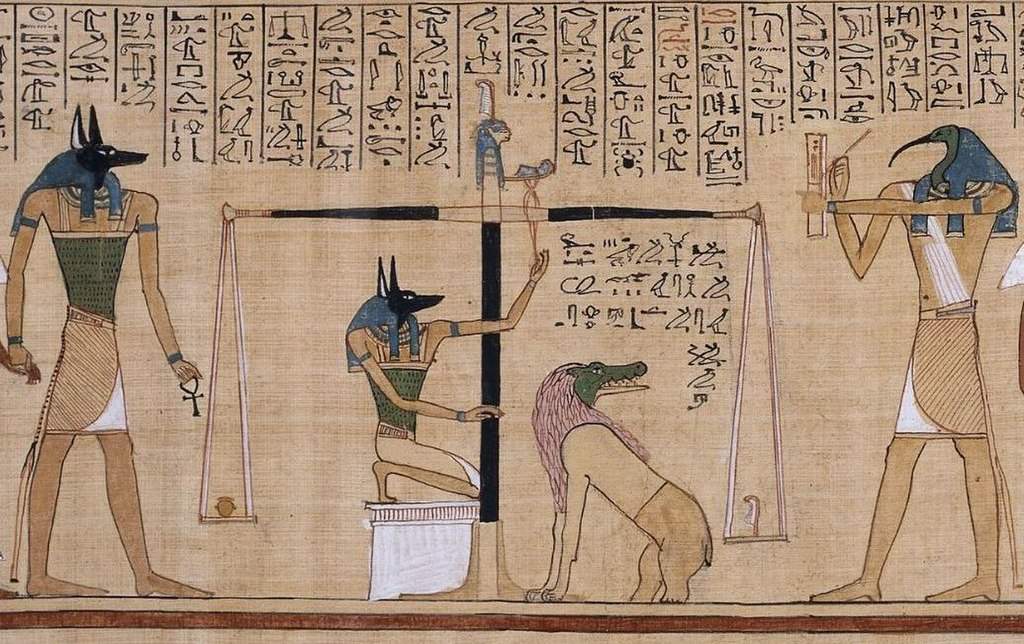|
Listen while working
Getting your Trinity Audio player ready...
|
Islamic philosophy emphasizes a greater prominence on our hearts (qalb: قلب), as the origin of spiritual consciousness (ruh: روح) while the brain being the epicenter of all physical activities. Heart and brain work in coherence through a vast and complex neural network, which is being under studies for centuries.
الَّذِينَ آمَنُوا وَتَطْمَئِنُّ قُلُوبُهُم بِذِكْرِ اللَّهِ أَلَا بِذِكْرِ اللَّهِ تَطْمَئِنُّ الْقُلُوب
“Those who believe, and whose hearts find satisfaction in the remembrance of Allah for without doubt in the remembrance of Allah do hearts find satisfaction” (Al Quran Surah ar-Ra’d 13:28)

The “Cardiocentric Hypothesis” was the historical belief that the heart controls sensation, thought, and body movement. Cardiocentrism was first derived from the ancient Egyptian belief that the heart was the house of thought and soul. This idea was later accepted by Greek philosophers such as Aristotle, Diocles, and Praxagoras of Cos. With the development of modern science and anatomy, the cardiocentric hypothesis was eventually proven incorrect, though its emphasis in Antiquity may have helped contribute to the discovery of the cardiovascular system and influenced the Middle Ages and Islamic Ascendancy. Wikipedia
Throughout the known history, of all ancient societies, including the Mesopotamians, the Babylonians, the Greeks, Arabs, and the Chinese, all the Prophets and Philosophers have regarded the human heart as the prime source of love, wisdom, intuition, and positive emotions. Egyptians believed the heart played a role in the spiritual dimension; upon death, they weighed the person’s heart to see how much good and evil it contained and placed the heart in special urns for burial, while the brain was discarded.
However, with the advancements of current scientific knowledge the Brain was modeled as the prime organ of all sensory perceptions in human body, and the heart was perceived as important only as a pumping system supplying blood to all the cells.
The scientific view of the brain as the only system involved in all cognitive and emotional functions is actually fairly recent. While psychologists have maintained that emotions are purely mental expressions generated by the brain alone, we are now beginning to see the emergence of a new, more complete understanding of how the brain functions—and how the body, brain, and heart interact in a dynamic and complex relationship. But while most scientists have focused only on the heart and the body’s responses to the brain’s commands, a few researchers have begun to examine the messages the heart sends to the brain and how the brain responds to them.
The first transplant was done on December 3, 1967 at Groote Schuur Hospital in Cape Town, South Africa. With the enhancement of post-transplant survival from 18 days in the first recipient to 33 years now.
Organ donations and transplants have saved countless lives. However, some people claim to have received more than just the working organ. There is an increasingly studied phenomenon known as “cellular memory”—the theory that cells within an organ carry the memories and desires of the person to whom they belonged. While it’s still very much on the fringes of science, as more studies are done, more and more examples appear to be making the case that cellular memory may be more than just a wild theory.
Such changes have been categorized as:
- Changes in preferences
- Alterations in emotions/temperament
- Modifications of identity
- Memories from the donor’s life
Neuroscientists discovered in the late twentieth century that the heart tissue contains enough neurons to qualify as a brain on its own right. Thus, every individual human being has two brains, the heart-brain and the cranial-brain. Scientists have realized that the heart-brain can function independently of the cranial-brain and that its electro-magnetic frequency is the strongest in the human body; it is 500 times stronger than the brain’s.
It is generally assumed that learning is restricted to neural and immune systems. However, the systemic memory hypothesis predicts that all dynamical systems that contain recurrent feedback loops store information and energy to various degrees. Sensitive transplant patients may evidence personal changes that parallel the history of their donors.
The human mind has two aspects: the heart-mind, which is the open system four-dimensional aspect of a mental process and the brain-mind, which is the closed system three-dimensional aspect of a mental process. All thinking processes originate and emerge from the heart-mind. In a healthy state the heart-mind keeps both systems in a state of equanimity. In isolation from the heart-mind, the brain-mind is only equipped and designed to deal with the linear three-dimensional world. The brain-mind is not designed to think; rather, it is designed to calculate. Whereas the brain-mind is limited to understanding the three-dimensional world, the heart-mind is the gateway to understanding the unseen four-dimensional world.
The heart has been found to have an intrinsic nervous system of its own, containing around 40,000 neurons called sensory neurites. This extensive and complex neural network has been characterized as a brain on the heart or heart-brain (Armour 2008). This allows the heart to act independently of the brain, sending and receiving meaningful messages of its own through the autonomic nervous system.

The heart and the brain are meant to work together in a magical symphony of resonance and vibration — the heart bringing in the higher knowledge of the soul, while the brain decoding and translating this knowledge to interact with the material world. The foundation of the most recent discoveries suggests “that the heart thinks, cells remember, and that both of these processes are related to an as yet mysterious, extremely powerful, but very subtle energy with properties, unlike any other known force.” (The Heart’s Code)
In an essay excerpt of an interview with Pearsall by Hal Bennett and Susan Sparrow, the details of this relationship are described as follows:
“Paul Pearsall is one of many researchers who has observed that transplant patients who receive an organ from another person’s body may also receive much more — what he calls their “cellular memories.” Recipients have reported inheriting everything from the donor’s food cravings to knowledge about his murderer — information that in one case led to the killer’s arrest. As a result of these and other researchers’ findings, Pearsall is now convinced that the heart has its own form of intelligence, that we are only rarely aware of in modern life. In his view, the heart processes information about the body and the outside world through an “info-energetic code” — a profuse network of blood vessels and cells that serves not only as our circulatory system but as an energy information gathering and distribution system, much like a complex telephone network. What’s more, he believes that the soul, at least in part, is a set of cellular memories that is carried largely by our hearts. Predictably, such views have met with opposition in the medical world. But in his view, the implications of his theories — that the heart “thinks,” cells remember, and communication can therefore transcend the boundaries of time and space — are too important for him to dismiss.”
Furthermore, Dr. Andrew Amour, the Canadian neurologist and professor discovered and wrote a book about his finding that “the heart is a sensory organ and a sophisticated information encoding and processing center, with an extensive intrinsic nervous system sufficiently sophisticated to qualify as a heart brain.”
Dr. Armour called this small but complex nervous system, “the Little Brain in the Heart”. His discoveries reveal to us that heart’s nervous system contains about 40,000 neurons — called sensory neurites — which actually communicate with the brain.
“The idea that we can think with our hearts is no longer just a metaphor, but is, in fact, a very real phenomenon. We now know this because the combined research of two or three fields is proving that the heart is the major center of intelligence in human beings.” Joseph Pearce
The heart is in a constant two-way dialogue with the brain. But, McCraty explains, the heart and cardiovascular system are sending far more signals to the brain than the brain is sending to the heart. McCraty found compelling evidence to suggest that the heart’s energy field (energetic heart) is coupled to a field of information that is not bound by the classical limits of time and space. This evidence comes from several rigorous experimental studies that investigated the proposition that the body receives and processes information about a future event before the event actually happens. One of these studies, conducted at the HeartMath laboratories, showed that both the heart and brain receive and respond to pre-stimulus information about a future event. But even more surprising is the finding that the heart seems to receive the intuitive information before the brain.
“The heart is now recognized by scientists as a highly complex system with its own functional “brain.” Research in the new discipline of neuro-cardiology shows that the heart is a sensory organ and a sophisticated center for receiving and processing information. The nervous system within the heart (or “heart brain”) enables it to learn, remember, and make functional decisions independent of the brain’s cerebral cortex. Moreover, numerous experiments have demonstrated that the signals the heart continuously sends to the brain influence the function of higher brain centers involved in perception, cognition, and emotional processing.” — Rollin McCraty, Heartmath Institute
But amazing new evidence has made heart specialists and researchers think again! It has been estimated that between 5-10% of recipients of donated hearts have had most unusual experiences, including taking on aspects of the lives, interests, tastes and passions of the unfortunate deceased heart donor! Heart specialists who initially scoffed at this, blaming possible side-effects of anti-rejection drugs, are being forced to look more closely at the available evidence

In the most recently published set of cases of heart transplant/donor association. two to five parallels per case were observed between changes following surgery and the history of the donor. These cases involved transcripts of audio taped interviews quoted verbatim and correlated with interviews with transplant recipients. recipient families or friends, and donor families or friends. Paul Ka’ikena Pearsall
47 patients who were transplanted over a period of 2 years in Vienna, Austria, were asked for an interview. Three groups of patients could be identified: 79% stated that their personality had not changed at all postoperatively. In this group, patients showed massive defense and denial reactions, mainly by rapidly changing the subject or making the question ridiculous. Fifteen per cent stated that their personality had indeed changed, but not because of the donor organ, but due to the life-threatening event. Six per cent (three patients) reported a distinct change of personality due to their new hearts. B Bunzel 1, B Schmidl-Mohl, A Grundböck, G Wollenek
The anatomy and functions of the intrinsic cardiac nervous system and its connections with the brain have been explored extensively by a relatively new discipline called “Neurocardiology” (comprising of psychophysiology, cardiology, neurophysiology and neuroanatomy). The “brain on the heart” or “heart-brain”, as it is commonly called, is an intricate network of complex ganglia, neurotransmitters, proteins and support cells, the same as those of the brain in the head.
Cases of personality changes due to organ transplants
Researchers documented changes of several heart transplant recipients, that seemed to support, the parallel changes between the donors and the recipients, such as, “food, music, art, sexual, recreational, and career preferences, as well as, specific instances of perceptions of names and sensory experiences related to the donors.” Following are some cases that these researchers have documented:
- Recipient is an 18-year-old girl who is able to finish phrases and songs that she did not know before the surgery. The donor was an 18-year-old boy who was a musician and liked music.
- Recipient is a 7-month-old boy who later was 6 years old, and ran up to an individual in church and called out the unknown person as, “Daddy.” The donor was a 16-month-old boy. The recipient called out to the donor’s father in church.
- Recipient is a 25-year-old male who is very sensual. He likes to hug, carries a purse, loves museums, and landscapes. The donor was a 24-year-old lady who was sensual, loved landscape paintings, and was gay.
- Recipient is a 47-year-old male who now loves classical music. The donor was a 17-year-old male who loved to play the violin and enjoyed classical music.
- Recipient is 29-year-old woman who dislikes meat. Prior to the transplant, she thought she was gay, but not afterward. After the surgery, she threw away gay political books. Furthermore, she would feel pressure on her chest/heart area. The donor was a 19-year-old woman who was, “Man-crazy” and died due to the impact of a car on her chest in a car accident.
- Recipient is a 47-year-old man who is giddy, gets hungry but dislikes food. The donor was a 14-year-old girl who would skip meals and had a silly giggle.
- Recipient is a 9-year-old boy who is afraid of water and feels that the donor was very sad. The donor was a 3-year-old girl who drowned at her mother’s boyfriend’s house.
- Recipient is a 19-year-old woman who wants to be on Broadway, be a nurse or a doctor. The donor was a 19-year-old woman who wanted to be an actress but also wanted to follow in her father’s footsteps and become a doctor.
- Recipient is a 5-year-old boy who gave the donor the name Timmy. The donor was a 3-year-old boy and his family called him, “Tim” and his actual name was Thomas.
- Recipient is a 56-year-old male who dreams of flashes of light in his face and suddenly, his face would get red hot. Before the flash, he gets a flash of Jesus. The donor was a 34-year-old police officer who was shot in the face. The killer has long hair, deep eyes, a beard and a calm look like some pictures of Jesus.
These researchers have concluded that “The findings for heart transplants appear more robust and more strongly associated with the donor’s history.
Unfortunately, the main stream medical science does not accept the evidences provided by a number of authentic studies done in various parts of the world. Yet, the evidences prove the existence of heart connection to brain in more and more studies.
اللَّهُ نَزَّلَ أَحْسَنَ الْحَدِيثِ كِتَابًا مُّتَشَابِهًا مَّثَانِيَ تَقْشَعِرُّ مِنْهُ جُلُودُ الَّذِينَ يَخْشَوْنَ رَبَّهُمْ ثُمَّ تَلِينُ جُلُودُهُمْ وَقُلُوبُهُمْ إِلَىٰ ذِكْرِ اللَّهِ ذَٰلِكَ هُدَى اللَّهِ يَهْدِي بِهِ مَن يَشَاءُ وَمَن يُضْلِلِ اللَّهُ فَمَا لَهُ مِنْ هَاد
Allah has revealed (from time to time) the most beautiful Message in the form of a Book, consistent with itself, (yet) repeating (its teaching in various aspects): the skins of those who fear their Lord tremble thereat; then their skins and their hearts do soften to the celebration of Allah’s praises. Such is the guidance of Allah: He guides there with whom He pleases, but such as Allah leaves to stray, can have none to guide (Al Quran Surah az-Zumar 39:23)
For more details, please check the following links
References
- Mindshock! – Transplanting Heart Memories – Channel 4
- Transplants, Cellular Memory, and Reincarnation, Larry Dossey
- Changes in Heart Transplant Recipients That Parallel the Personalities of Their Donors; Pearsall, Paul; Schwartz, Gary E. R. & Russek, Linda G. S.
- Neurocardiology: close interaction between heart and brain E. E. van der Wallcorresponding author and W. H. van Gilst
- Psychiatric outcome of heart transplantation
- Scand J Thorac Cardiovasc Surg. 1984;18(2):97-103 – PubMed
- 10 Organ Recipients Who Took on the Traits of Their Donors
- Yes, the Heart Really Can “Think” (ukapologetics.net)
- Qalb e Saleem (Pure Heart) and Qalb e Mareez (Diseased Heart): Insight from Scriptures and Medical Science
- Does changing the heart mean changing personality? A retrospective inquiry on 47 heart transplant patients, B Bunzel 1, B Schmidl-Mohl, A Grundböck, G Wollenek
- Can An Organ Transplant Change A Recipient’s Personality? Cell Memory Theory Affirms ‘Yes’
- Changes in heart transplant recipients that parallel the personalities of their donors, P Pearsall 1, GE Schwartz, LG Russek
- Memory transference in organ transplant recipients
- The Scientific Mystery of Transplant Cellular Memory: Projectiological Hypotheses
- For a Heart-Lung Transplant Patient, a New Life Beyond Her Wildest Dreams
- Put your heart into it. Learn it by heart. Sing with all your heart. by Dr. Dominique Surel






